History
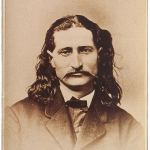 When we think of the Old West, cowboys, Indians, and outlaws come to mind…not to mention showdowns, or what might have been known as a duel, in years gone by. In reality, showdowns were not all that common…no matter what Hollywood tries to tell you. The men and women who went west were a tough bunch. In the beginning, it was mostly men who went west, and since there was no law in the West, altercations were bound to happen. Still, altercations that led to a showdown were not all that common. Rather than coolly confronting each other on a dusty street in a deadly game of quick draw, most men began shooting at each other in drunken brawls or spontaneous arguments. Ambushes and cowardly attacks were far more common than noble showdowns, but those who took the noble approach were far more respected.
When we think of the Old West, cowboys, Indians, and outlaws come to mind…not to mention showdowns, or what might have been known as a duel, in years gone by. In reality, showdowns were not all that common…no matter what Hollywood tries to tell you. The men and women who went west were a tough bunch. In the beginning, it was mostly men who went west, and since there was no law in the West, altercations were bound to happen. Still, altercations that led to a showdown were not all that common. Rather than coolly confronting each other on a dusty street in a deadly game of quick draw, most men began shooting at each other in drunken brawls or spontaneous arguments. Ambushes and cowardly attacks were far more common than noble showdowns, but those who took the noble approach were far more respected.
Southern emigrants brought to the West a crude form of the “code duello,” a highly formalized means of solving disputes between gentlemen with swords or guns that had its origins in European chivalry. Similar to the duels of times past, they thought it would bring some form of civility to the West. The duel influenced the informal western code of what constituted a legitimate and legal gun battle. Duels were not used to for very long. In fact, by the second half of the 19th century, few Americans still fought duels to solve their problems. 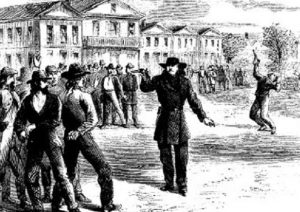 The western code required that a man resort to his six-gun only in defense of his honor or life, and only if his opponent was also armed. Also, a western jury was unlikely to convict a man in a shooting provided witnesses testified that his opponent had been the aggressor.
The western code required that a man resort to his six-gun only in defense of his honor or life, and only if his opponent was also armed. Also, a western jury was unlikely to convict a man in a shooting provided witnesses testified that his opponent had been the aggressor.
In what is thought to be the first western duel, Wild Bill Hickok, killed Davis Tutt on July 21, 1865. Hickok was a skilled gunman with a formidable reputation, who was eking out a living as a professional gambler in Springfield, Missouri. He quarreled with Tutt, a former Union soldier, but it is unclear what caused the dispute. Some people say it was over a card game while others say they fought over a woman. Whatever the cause, the two men agreed to a duel. The showdown took place the following day with crowd of onlookers watching as Hickok and Tutt confronted each other from opposite sides of the town square. When Tutt was about 75 yards away, Hickok shouted, “Don’t come any closer, Dave.” Tutt nervously drew his revolver and fired a shot that went wild. Hickok, by contrast, remained cool. He steadied his own revolver in his left hand and shot Tutt dead with a bullet through the chest. Hickok immediately turn and threatened Tutt’s friends…should they try to avenge his death.

Having adhered to the code of the West, Hickok was acquitted of manslaughter charges. Nevertheless, those were rough times, and just eleven years later, Hickok died in a fashion far more typical of the violence of the day. A young gunslinger shot him in the back of the head while he played cards. Legend says that the hand Hickok was holding at the time of his death was two pair…black aces and black eights. The hand would forever be known as the “dead man’s hand.” Jack McCall shot Hickok from behind as he played poker at Nuttal & Mann’s Saloon in Deadwood, Dakota Territory on August 2, 1876. In one shooting is honor, and in another is a dishonor. McCall was executed for the murder on March 1, 1877.
 Most people know that at 10:56pm EDT, on July 20, 1969, American astronaut Neil Armstrong, 240,000 miles from Earth, speaks these words to more than a billion people listening at home, “That’s one small step for man, one giant leap for mankind.” Stepping off the lunar landing module Eagle, Armstrong became the first human to walk on the surface of the moon. The moment was historic, in more ways than one. Yes, the United States was the first nation to put a man on the moon. John F Kennedy’s dream had become a reality. On May 25, 1961, Kennedy made his famous appeal to a special joint session of Congress: “I believe this nation should commit itself to achieving the goal, before this decade is out, of landing a man on the moon and returning him safely to Earth.”
Most people know that at 10:56pm EDT, on July 20, 1969, American astronaut Neil Armstrong, 240,000 miles from Earth, speaks these words to more than a billion people listening at home, “That’s one small step for man, one giant leap for mankind.” Stepping off the lunar landing module Eagle, Armstrong became the first human to walk on the surface of the moon. The moment was historic, in more ways than one. Yes, the United States was the first nation to put a man on the moon. John F Kennedy’s dream had become a reality. On May 25, 1961, Kennedy made his famous appeal to a special joint session of Congress: “I believe this nation should commit itself to achieving the goal, before this decade is out, of landing a man on the moon and returning him safely to Earth.”
Most people know the rest of the story, or do they. At that moment, and for the next few moments, Neil Armstrong was the only human to step foot on the moon. He would always be the first human to step foot on the moon, but for a few minutes, he was the only human to do so. “Buzz” Aldrin joined him on the moon’s surface at 11:11pm, so now there were two humans who had walked on the moon, and while that was quite different from Armstrong’s feeling of being the only human to walk on the moon, it was still something so unique that I’m sure it had to be almost mind-boggling. Lots of us have done something that no one else in our  family or social circle has done, and the feeling of accomplishment is almost like a high, but this was something that no other human had ever done. Now that’s a high!! Of course, Armstrong wasn’t the only human to ever experience something like that. Many pioneers in different areas of history did the same thing. The first flight, the first car, the first heart transplant…the list goes on, but all of those had one thing in common. They were done on Earth. Armstrong was the first person to walk on a planet that was not the Earth. No matter how you look at it, this was unique, and Armstrong stood alone among human beings…not only for his accomplishment, but more for where it took place.
family or social circle has done, and the feeling of accomplishment is almost like a high, but this was something that no other human had ever done. Now that’s a high!! Of course, Armstrong wasn’t the only human to ever experience something like that. Many pioneers in different areas of history did the same thing. The first flight, the first car, the first heart transplant…the list goes on, but all of those had one thing in common. They were done on Earth. Armstrong was the first person to walk on a planet that was not the Earth. No matter how you look at it, this was unique, and Armstrong stood alone among human beings…not only for his accomplishment, but more for where it took place.
After “Buzz” Aldrin joined Neil Armstrong on the moon’s surface, they took photographs of the terrain, planted a United States flag on its surface. Then they ran a few simple scientific tests, and spoke with President Richard M Nixon via Houston. By 1:11am on July 21, both astronauts were back in the lunar module and the hatch was closed. The two men slept that night on the surface of the moon. Then, at 1:54pm the Eagle began its ascent back to the command module. Among the items left on the surface of the moon was a plaque that read: “Here men from the planet Earth first set foot on the moon–July 1969 A.D–We came in peace for all mankind.” There would be five more successful lunar landing missions, and one unplanned lunar swing-by, when Apollo 13 experienced a malfunction that nearly made it impossible to return to Earth. The last men to walk on the moon, astronauts Eugene Cernan and Harrison Schmitt of the Apollo 17 mission, left the lunar surface on December  14, 1972. In all, 12 men walked on the moon. All Americans, they were, on Apollo 11: Neil Armstrong (NASA Civilian) and Buzz Aldrin (USAF), on Apollo 12: Pete Conrad (US Navy) and Alan Bean (US Navy), on Apollo 14: Alan Shepard (US Navy) and Edgar Mitchell (US Navy), on Apollo 15: David Scott (USAF) and James Irwin (USAF), on Apollo 16: John Young (US Navy) and Charles Duke (USAF), and on Apollo 17: Gene Cernan (US Navy) and Harrison Schmitt (NASA Civilian). While Neil Armstrong was the only human to walk on the moon’s surface for 15 minutes in time, there were 11 others who had the distinct honor of walking on the moon, and while they weren’t the only humans, they were the only 12 humans to do so, and that had to feel really strange to them for the rest of their lives.
14, 1972. In all, 12 men walked on the moon. All Americans, they were, on Apollo 11: Neil Armstrong (NASA Civilian) and Buzz Aldrin (USAF), on Apollo 12: Pete Conrad (US Navy) and Alan Bean (US Navy), on Apollo 14: Alan Shepard (US Navy) and Edgar Mitchell (US Navy), on Apollo 15: David Scott (USAF) and James Irwin (USAF), on Apollo 16: John Young (US Navy) and Charles Duke (USAF), and on Apollo 17: Gene Cernan (US Navy) and Harrison Schmitt (NASA Civilian). While Neil Armstrong was the only human to walk on the moon’s surface for 15 minutes in time, there were 11 others who had the distinct honor of walking on the moon, and while they weren’t the only humans, they were the only 12 humans to do so, and that had to feel really strange to them for the rest of their lives.
 These days, being connected to the internet is commonplace. We connect from our computer, laptop, tablet, and even our phone. Many occupations, including the one I am in could not really function without the internet. When the computers go down, we are shut down too. For most of us, the internet is so much a part of our lives, that we simply cannot imagine life without it. Nevertheless, the reality is that until quite recently, there was no internet. I know people who think that might have been a better time, but I disagree. In fact, I think the people who say they think that, really have no idea just how bad that would be, and if they tried it once, they would change their minds quickly. People don’t realize how many things depend on the internet.
These days, being connected to the internet is commonplace. We connect from our computer, laptop, tablet, and even our phone. Many occupations, including the one I am in could not really function without the internet. When the computers go down, we are shut down too. For most of us, the internet is so much a part of our lives, that we simply cannot imagine life without it. Nevertheless, the reality is that until quite recently, there was no internet. I know people who think that might have been a better time, but I disagree. In fact, I think the people who say they think that, really have no idea just how bad that would be, and if they tried it once, they would change their minds quickly. People don’t realize how many things depend on the internet.
The first real idea of information available at our fingertips began to form on October 4, 1957, when the Soviet Union launched the world’s first manmade satellite into orbit. Known as Sputnik, the satellite did not do much. It tumbled aimlessly around in outer space, sending blips and bleeps from its radio transmitters as it circled the Earth. Nevertheless, to many Americans, the one foot diameter Sputnik was proof of something alarming. Up to this point, scientists and engineers in the United States had been designing bigger cars and better television sets, but the Soviets had been focusing on…less frivolous things, and they were going to win the Cold War because of it. Americans saw that information could eventually be transmitted back to the Soviets concerning American military and government secrets. It was the dawning of the age of spy satellites.
Sputnik’s launch, brought about the era of science and technology in America. In an effort to keep up, schools began teaching subjects like chemistry, physics and calculus. The government gave grants to corporations, who invested them in scientific research and development. The federal government formed new agencies, such as the National Aeronautics and Space Administration (NASA) and the Department of Defense’s Advanced Research Projects Agency (ARPA), to develop space-age technologies such as rockets, weapons and computers. Of course, the computer didn’t do nearly as much as it does these days, and it was the size of a small house. In 1962, a scientist from M.I.T. and ARPA named J.C.R. Licklider proposed a solution to this problem. His proposal  was a “galactic network” of computers that could talk to one another. Such a network would enable government leaders to communicate even if the Soviets destroyed the telephone system. Then came “packet switching.” Packet switching breaks data down into blocks, or packets, before sending it to its destination. That way, each packet can take its own route from place to place. Without packet switching, the government’s computer network, which is now known as the ARPAnet, would have been just as vulnerable to enemy attacks as the phone system. At least now computers did more, but they were still big.
was a “galactic network” of computers that could talk to one another. Such a network would enable government leaders to communicate even if the Soviets destroyed the telephone system. Then came “packet switching.” Packet switching breaks data down into blocks, or packets, before sending it to its destination. That way, each packet can take its own route from place to place. Without packet switching, the government’s computer network, which is now known as the ARPAnet, would have been just as vulnerable to enemy attacks as the phone system. At least now computers did more, but they were still big.
In 1969, ARPAnet delivered its first message. A “node-to-node” communication from one computer located in a research lab at UCLA, to the second located at Stanford. The message “LOGIN” was short and simple, and it crashed the ARPA network. Wow!! Things really are different today. The Stanford computer only received the note’s first two letters. By the end of 1969, just four computers were connected to the Arpanet. During the 1970s the network grew steadily. In 1971, it added the University of Hawaii’s ALOHAnet, and two years later it added networks at London’s University College and the Royal Radar Establishment in Norway. As packet-switched computer networks multiplied, it became more difficult for them to integrate into a single worldwide “Internet.” By the end of the 1970s, a computer scientist named Vinton Cerf had begun to solve this problem by developing a way for all of the computers on all of the world’s mini-networks to communicate with one another. He called his invention “Transmission Control Protocol,” or TCP. Later, he added an additional protocol, known as “Internet Protocol.” The acronym we use to refer to these today is TCP/IP. One writer describes Cerf’s protocol as “the ‘handshake’ that introduces distant and different computers to each other in a virtual space.”
Cerf’s protocol transformed the Internet into a worldwide network. Throughout the 1980s, researchers and scientists used it to send files and data from one computer to another. In 1991 the Internet changed again. That year, a computer programmer in Switzerland named Tim Berners-Lee introduced the World Wide Web…an Internet that was not simply a way to send files from one place to another, but was itself a “web” of information that anyone on the Internet could retrieve. Berners-Lee created the Internet that we know and use today. Since then, the Internet has changed in many ways, and will likely continue to change as time goes on.  In 1992, a group of students and researchers at the University of Illinois developed a browser that they called Mosaic, later known as Netscape. Mosaic offered a user-friendly way to search the Web. It allowed users to see words and pictures on the same page for the first time and to navigate using scrollbars and clickable links. Then Congress decided that the Web could be used for commercial purposes. Companies developed websites of their own, and e-commerce entrepreneurs began to use the Internet to sell goods directly to customers. These days, social networking sites like Facebook have become a popular way for people of all ages, including me, to stay connected. Today, almost one-third of the world’s 6.8 billion people use the Internet regularly.
In 1992, a group of students and researchers at the University of Illinois developed a browser that they called Mosaic, later known as Netscape. Mosaic offered a user-friendly way to search the Web. It allowed users to see words and pictures on the same page for the first time and to navigate using scrollbars and clickable links. Then Congress decided that the Web could be used for commercial purposes. Companies developed websites of their own, and e-commerce entrepreneurs began to use the Internet to sell goods directly to customers. These days, social networking sites like Facebook have become a popular way for people of all ages, including me, to stay connected. Today, almost one-third of the world’s 6.8 billion people use the Internet regularly.
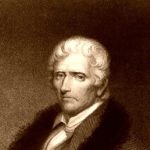
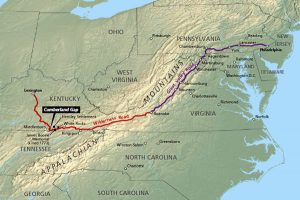 In 1775, Daniel Boone blazed a trail through the Cumberland Gap…a notch in the Appalachian Mountains located near the intersection of Kentucky, Virginia and Tennessee…through the interior of Kentucky and to the Ohio River. That might not seem like such a big deal, but the trail, which became known as the Wilderness Road, would serve as the pathway to the western United States for some 300,000 settlers over the next 35 years. The path that Boone pioneered led to the establishment of the first settlements in Kentucky, including Boonesboro; and to Kentucky’s admission to the Union as the 15th state in 1792. Of course, Daniel Boone wasn’t the first human being to ever use the trail. The earliest origins of the Wilderness Road were the trails, created by the great herds of buffalo that once roamed the region. Then came the Native American tribes such as the Cherokee and Shawnee, who used the trails to make attacks on each other. They called the trail the Athowominee, which means “Path of the Armed Ones” or “The Great Warrior’s Path.” In 1673, a young man named Gabriel Arthur, became the first white settler known to have crossed through the Cumberland Gap using part of what would become the Wilderness Road. Of course, it wasn’t his choice to go. The Shawnee warriors captured Arthur and forced him to go with them, before releasing him later. I’m quite sure he would have gladly forgone the honor of being the first white man on the trail, if it meant that he would not be taken prisoner.
In 1775, Daniel Boone blazed a trail through the Cumberland Gap…a notch in the Appalachian Mountains located near the intersection of Kentucky, Virginia and Tennessee…through the interior of Kentucky and to the Ohio River. That might not seem like such a big deal, but the trail, which became known as the Wilderness Road, would serve as the pathway to the western United States for some 300,000 settlers over the next 35 years. The path that Boone pioneered led to the establishment of the first settlements in Kentucky, including Boonesboro; and to Kentucky’s admission to the Union as the 15th state in 1792. Of course, Daniel Boone wasn’t the first human being to ever use the trail. The earliest origins of the Wilderness Road were the trails, created by the great herds of buffalo that once roamed the region. Then came the Native American tribes such as the Cherokee and Shawnee, who used the trails to make attacks on each other. They called the trail the Athowominee, which means “Path of the Armed Ones” or “The Great Warrior’s Path.” In 1673, a young man named Gabriel Arthur, became the first white settler known to have crossed through the Cumberland Gap using part of what would become the Wilderness Road. Of course, it wasn’t his choice to go. The Shawnee warriors captured Arthur and forced him to go with them, before releasing him later. I’m quite sure he would have gladly forgone the honor of being the first white man on the trail, if it meant that he would not be taken prisoner.
Another expedition, led by Dr Thomas Walker set out in 1750, from Virginia with the aim of exploring lands further west for potential settlement. Discouraged by the rough terrain in southeastern Kentucky, the group turned back, but Walker’s detailed report of the expedition proved to be an invaluable resource for later expeditions, including Boone’s. Having hiked some pretty tough trails, I can say that I can understand the idea of turning back. I’ve never turned back on a trail, but then I’m not camping out on my trails either. Freezing cold in the nights and searing heat in the daytime, could make for a very rough trip.
In 1773, Boone attempted to lead his family and several others to settle in Kentucky, but Cherokee Indians attacked the group, and two of the would-be settlers, including Boone’s son James, were killed. Two years later, a group of wealthy investors headed up by Judge Richard Henderson of North Carolina formed the Transylvania Company, to colonize the rich lands around the Kentucky River and establish Kentucky as the 14th colony. They decided to hire Boone, who’s knowledge of the existing trails was well known, to blaze a new trail through the Cumberland Gap. Henderson decided to approach the Cherokee directly, and in March 1775 his associates negotiated with the Cherokee to purchase the land between the Cumberland and Kentucky rivers, a total of some 20 million acres, for 10,000 pounds of goods.
On March 10, 1775, Boone and around 30 other ax-wielding road cutters, including his brother and son-in-law, set off from the Long Island of Holston River, a sacred Cherokee treaty site located in present day Kingsport, Tennessee. From there they traveled north along a portion of the Great Warrior’s Path, heading through Moccasin Gap in the Clinch Mountains. They Avoided Troublesome Creek, which had plagued previous travelers along the route, and crossed the Clinch River, near what is now Speers Ferry, Virginia. Then they followed Stock Creek, crossed Powell Mountain through Kane’s Gap and headed into the Powell River Valley. About 20 miles from the Cumberland Gap, Boone and his party rested at Martin’s Station, a settlement near what is now Rose Hill, Virginia that had been founded by Joseph Martin in 1769. After a Native American attack, Martin and 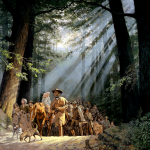
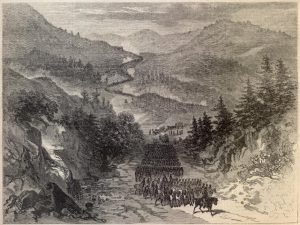 his fellow settlers had abandoned the region, but they had returned in early 1775 to build a more permanent settlement. Just before reaching their intended settlement site on the Kentucky River in late March, Boone’s group was attacked by some of the Shawnee. They had not ceded their right to Kentucky’s land, like the Cherokee. Most of Boone’s men were able to escape, but a few were killed or injured. In April, the group finally arrived on the south side of the Kentucky River, in what is now Madison County, Kentucky.
his fellow settlers had abandoned the region, but they had returned in early 1775 to build a more permanent settlement. Just before reaching their intended settlement site on the Kentucky River in late March, Boone’s group was attacked by some of the Shawnee. They had not ceded their right to Kentucky’s land, like the Cherokee. Most of Boone’s men were able to escape, but a few were killed or injured. In April, the group finally arrived on the south side of the Kentucky River, in what is now Madison County, Kentucky.
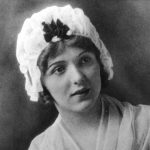 When we think of the Revolutionary war, or any other war, the people we think of are usually generals, presidents, and enemies, but in the case of the Revolutionary War, there is another name that is quite important. Her name was Betsy Ross. She became a patriotic icon in the late 19th century when stories surfaced that she had sewn the first “stars and stripes” US flag in 1776. Some say that story is doubtful, but Ross was known to have sewn flags during the Revolutionary War. Betsy was born Elizabeth Griscom on January 1, 1752, to Rebecca James Griscom and Samuel Griscom, who were both Quakers, living in the bustling colonial city of Philadelphia. As was often the case in those days, families were large, and Elizabeth was the eighth of seventeen children. Elizabeth came from generations of craftsman. Her father was a house carpenter. Elizabeth attended a Quaker school and was then apprenticed to William Webster, who was an upholsterer. In Webster’s workshop she learned to sew mattresses, chair covers and window blinds, but Betsy was a bit of a rebel, it seems. In the summer of 1773, when Betsy was 21 years old, she crossed the river to New Jersey to elope with John Ross, a fellow apprentice of Webster’s and the son of an Episcopal minister. This was a double act of defiance, and she was expelled from the Quaker church. The Rosses started their own upholstery shop, and John joined the militia. He died after barely two years of marriage. Family legend attributed John’s death to a gunpowder explosion, but illness is a more likely cause of death. Whatever the cause, Betsy found herself widowed, and exiled from her family, but Betsy was no quitter.
When we think of the Revolutionary war, or any other war, the people we think of are usually generals, presidents, and enemies, but in the case of the Revolutionary War, there is another name that is quite important. Her name was Betsy Ross. She became a patriotic icon in the late 19th century when stories surfaced that she had sewn the first “stars and stripes” US flag in 1776. Some say that story is doubtful, but Ross was known to have sewn flags during the Revolutionary War. Betsy was born Elizabeth Griscom on January 1, 1752, to Rebecca James Griscom and Samuel Griscom, who were both Quakers, living in the bustling colonial city of Philadelphia. As was often the case in those days, families were large, and Elizabeth was the eighth of seventeen children. Elizabeth came from generations of craftsman. Her father was a house carpenter. Elizabeth attended a Quaker school and was then apprenticed to William Webster, who was an upholsterer. In Webster’s workshop she learned to sew mattresses, chair covers and window blinds, but Betsy was a bit of a rebel, it seems. In the summer of 1773, when Betsy was 21 years old, she crossed the river to New Jersey to elope with John Ross, a fellow apprentice of Webster’s and the son of an Episcopal minister. This was a double act of defiance, and she was expelled from the Quaker church. The Rosses started their own upholstery shop, and John joined the militia. He died after barely two years of marriage. Family legend attributed John’s death to a gunpowder explosion, but illness is a more likely cause of death. Whatever the cause, Betsy found herself widowed, and exiled from her family, but Betsy was no quitter.
In the summer of 1776 or 1777, a widowed Betsy Ross received a visit from General George Washington regarding a design for a flag for the new nation. Washington and the Continental Congress had come up with the basic layout. Betsy allegedly finalized the design, arguing for stars with five points, instead of the six 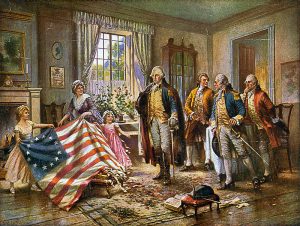 pointed stars that Washington had suggested, mainly because the cloth could be folded and cut out with a single snip. The tale of Washington’s visit to Ross was first made public in 1870, nearly a century later, by Betsy Ross’s grandson. However, the flag’s design was apparently not fixed until later than 1776 or 1777. Charles Wilson Peale’s 1779 painting of George Washington following the 1777 Battle of Princeton features a flag with six-pointed stars.
pointed stars that Washington had suggested, mainly because the cloth could be folded and cut out with a single snip. The tale of Washington’s visit to Ross was first made public in 1870, nearly a century later, by Betsy Ross’s grandson. However, the flag’s design was apparently not fixed until later than 1776 or 1777. Charles Wilson Peale’s 1779 painting of George Washington following the 1777 Battle of Princeton features a flag with six-pointed stars.
As I said, there has been some arguments as to the validity of Betsy Ross’ claim to fame as the flag’s maker, but most have been successfully disproven. Still, the fact that a painting was done with the six pointed stars is something to consider, or at least wonder about, not that I’m disputing her claim to fame. In fact, I have wondered if the painting was done that way, because of General Washington’s plan for the flag. I have also wondered why it was always said that Betsy Ross sewed the flag, because in June of 1777, Betsy remarried, to a man named Joseph Ashburn, who was a sailor. They went on to have two daughters. In 1782 Ashburn was apprehended while working as a privateer in the West Indies and died in a British prison. A year later, Betsy married John Claypoole, a man who had grown up with her in Philadelphia’s Quaker community and had been imprisoned in England with Ashburn. A few months after their wedding, the Treaty of Paris was signed, ending the Revolutionary War. They went on to have five daughters. Over the next decades, Betsy Claypoole and her daughters sewed upholstery and made flags, banners and standards for the new nation. In 1810 she made six 18 by 24 foot garrison flags to be sent to New Orleans. The next year she made 27 flags for the Indian Department. She spent her last decade in retirement, her vision failing. She died in 1836, at age 84.
The records of the US flag’s origins are not complete, in part because at that time Americans were indifferent to 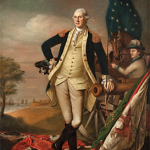 flags as national relics. “The Star-Spangled Banner” was written in 1812, but wasn’t popular until the 1840s. As the 1876 US Centennial approached, enthusiasm for the flag increased. In 1870, that Betsy Claypoole’s grandson William Canby presented the family story to the Historical Society of Pennsylvania. At the time several claims on the first flag were surfacing, ranging from other Philadelphia seamstresses to a New Hampshire quilting bee said to have fashioned the banner out of cut-up gowns. Most such stories were wishful desires to be symbols of female Revolutionary patriotism. To be women materially supporting their fighting men and, maybe to show George Washington a better way to make a star. Nevertheless, none of the stories ever took hold, except the one about Betsy Ross…or Ashburn…or Claypoole.
flags as national relics. “The Star-Spangled Banner” was written in 1812, but wasn’t popular until the 1840s. As the 1876 US Centennial approached, enthusiasm for the flag increased. In 1870, that Betsy Claypoole’s grandson William Canby presented the family story to the Historical Society of Pennsylvania. At the time several claims on the first flag were surfacing, ranging from other Philadelphia seamstresses to a New Hampshire quilting bee said to have fashioned the banner out of cut-up gowns. Most such stories were wishful desires to be symbols of female Revolutionary patriotism. To be women materially supporting their fighting men and, maybe to show George Washington a better way to make a star. Nevertheless, none of the stories ever took hold, except the one about Betsy Ross…or Ashburn…or Claypoole.
 When we think of Nazi Germany, Hitler always comes to mind. We all know that he was an insane, murderous dictator, and that the people of Germany were afraid to stand up to him and his army. We know that he hated the Jewish people, even though he was part Jewish, and that later he also hated the gypsies. His hatred grew so strong that he enslaved and killed many thousands of these people, for no crime other than that they were Jewish or gypsies. During the years of Hitler’s reign, there were those who followed him because they agreed with him, those who just weren’t sure what they believed, and those who disagreed, but dared not oppose him. Children were often taken from their families and raised to be good Nazis. I’m sure this added to the number of people who agreed with Hitler, because it is a well know fact that children learn what they live.
When we think of Nazi Germany, Hitler always comes to mind. We all know that he was an insane, murderous dictator, and that the people of Germany were afraid to stand up to him and his army. We know that he hated the Jewish people, even though he was part Jewish, and that later he also hated the gypsies. His hatred grew so strong that he enslaved and killed many thousands of these people, for no crime other than that they were Jewish or gypsies. During the years of Hitler’s reign, there were those who followed him because they agreed with him, those who just weren’t sure what they believed, and those who disagreed, but dared not oppose him. Children were often taken from their families and raised to be good Nazis. I’m sure this added to the number of people who agreed with Hitler, because it is a well know fact that children learn what they live.
Nevertheless, while many people think that all the German people agreed with Hitler’s ways, but in reality, that was not the case. As World War II started to turn against the Germans, and Hitler’s atrocities grew, growing numbers of Germans, both military and civilian…began conspiring to assassinate their leader. It was assumed that the masses were unlikely to turn on the man in whose hands they had placed their lives and future. That said, they knew that it was up to men close to Hitler…German officers, to remove him. Leadership of the plot fell to Claus von Stauffenberg, newly promoted to colonel and chief of staff to the commander of the army reserve. His position gave him access to Hitler’s headquarters at Berchtesgaden and Rustenburg.
Stauffenberg had served in the German army since 1926. He was a staff officer in the campaign against the Soviet Union. He became disgusted at his fellow countrymen’s vicious treatment of Jews and Soviet prisoners. He requested to be transferred to North Africa, where he lost his left eye, right hand, and two fingers of his left hand. After recovering from his injuries, Stauffenberg became determined to see Hitler removed from power by 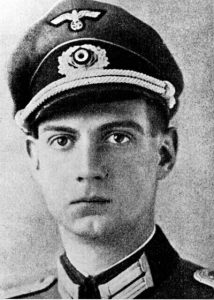 any means necessary. He traveled to Berchtesgaden on July 3 and met with a fellow army officer, Major General Helmuth Stieff, who gave him a bomb with a silent fuse that was small enough to be hidden in a briefcase. On July 11, 1944, Stauffenberg was summoned to Berchtesgaden to report to Hitler on the current military situation. He planned to use the bomb on July 15, but at the last minute, Hitler was called away to his headquarters at Rustenburg, in East Prussia. Stauffenberg was asked to follow him there. On July 16, a meeting took place between Stauffenberg and Colonel Caesar von Hofacker, who was another conspirator, in the Berlin suburb of Wannsee. Hofacker informed Stauffenberg that German defenses had collapsed at Normandy, and the tide had turned against them in the West. The assassination attempt was postponed until July 20, at Rustenburg. In the end, it wasn’t an assassin’s bomb that ended Hitler’s reign, but rather his own hands. Nevertheless, it wasn’t because the German people wanted him to continue to be their leader, because they definitely did not.
any means necessary. He traveled to Berchtesgaden on July 3 and met with a fellow army officer, Major General Helmuth Stieff, who gave him a bomb with a silent fuse that was small enough to be hidden in a briefcase. On July 11, 1944, Stauffenberg was summoned to Berchtesgaden to report to Hitler on the current military situation. He planned to use the bomb on July 15, but at the last minute, Hitler was called away to his headquarters at Rustenburg, in East Prussia. Stauffenberg was asked to follow him there. On July 16, a meeting took place between Stauffenberg and Colonel Caesar von Hofacker, who was another conspirator, in the Berlin suburb of Wannsee. Hofacker informed Stauffenberg that German defenses had collapsed at Normandy, and the tide had turned against them in the West. The assassination attempt was postponed until July 20, at Rustenburg. In the end, it wasn’t an assassin’s bomb that ended Hitler’s reign, but rather his own hands. Nevertheless, it wasn’t because the German people wanted him to continue to be their leader, because they definitely did not.
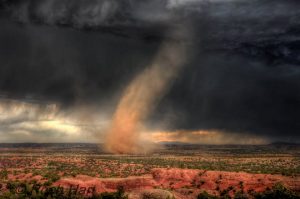 Weather has always been a subject of interest to people, even if we still don’t completely have a full grasp of it, not even after all these years and all our technology. The main difference I see now is that we hear about weather all the time. It’s on television, the radio, and even our phones. There are warnings for everything…thunder storms, tornadoes, snow storms, flash floods, and hurricanes. Nevertheless, all the meteorologists can truly do is predict a weather event. It may or may not materialize.
Weather has always been a subject of interest to people, even if we still don’t completely have a full grasp of it, not even after all these years and all our technology. The main difference I see now is that we hear about weather all the time. It’s on television, the radio, and even our phones. There are warnings for everything…thunder storms, tornadoes, snow storms, flash floods, and hurricanes. Nevertheless, all the meteorologists can truly do is predict a weather event. It may or may not materialize.
Now, flash back to, oh say 1680 or even to 1521. Other than looking at the sky, how did the people predict the weather? Yes the sky can be a great predictor of coming storms, but unless you knew something about weather  patterns, you would be unlikely to have any idea that something like a tornado, flood, or hurricane were coming. Especially in 1680 or 1521. Those dates are rather important in the world of weather. In August of 1521, a meteorological phenomenon occurred in the Basin of Mexico. There were no cameras back them, no cell phones or computers to record the event. The only known description appears in Book XII of the Florentine Codex, which is an account of the Spanish conquest of Mexico written in Nahuatl in the mid-sixteenth century. The account states that just before the fall of Mexico-Tenochtitlan a heavy storm which included a whirlwind struck the basin. The whirlwind hovered for a while above Tlatelolco, Tenochtitlan’s twin city. Then it moved to the lake where it disappeared.
patterns, you would be unlikely to have any idea that something like a tornado, flood, or hurricane were coming. Especially in 1680 or 1521. Those dates are rather important in the world of weather. In August of 1521, a meteorological phenomenon occurred in the Basin of Mexico. There were no cameras back them, no cell phones or computers to record the event. The only known description appears in Book XII of the Florentine Codex, which is an account of the Spanish conquest of Mexico written in Nahuatl in the mid-sixteenth century. The account states that just before the fall of Mexico-Tenochtitlan a heavy storm which included a whirlwind struck the basin. The whirlwind hovered for a while above Tlatelolco, Tenochtitlan’s twin city. Then it moved to the lake where it disappeared.
When the experts of today look at the account of the phenomenon in the context of the Nahua culture, and  comparing it with European descriptions of tornados and waterspouts, they can determine that the phenomenon was indeed a tornado. Their conclusion is further supported by eighteenth and nineteenth century pictorial and written evidence showing that tornadoes do occur in the territory now occupied by Mexico City. Since the tornado of Tlatelolco predates the Cambridge, Massachusetts, tornado of July 8, 1680, which had been thought to be the first recorded tornado in the Americas, the Tlatelolco tornado actually represents the earliest documented tornado in the Americas. Either way, since people didn’t really have much information to go on back then, I’m sure they first said some version of “What is that?!!?” At least, I know I would have.
comparing it with European descriptions of tornados and waterspouts, they can determine that the phenomenon was indeed a tornado. Their conclusion is further supported by eighteenth and nineteenth century pictorial and written evidence showing that tornadoes do occur in the territory now occupied by Mexico City. Since the tornado of Tlatelolco predates the Cambridge, Massachusetts, tornado of July 8, 1680, which had been thought to be the first recorded tornado in the Americas, the Tlatelolco tornado actually represents the earliest documented tornado in the Americas. Either way, since people didn’t really have much information to go on back then, I’m sure they first said some version of “What is that?!!?” At least, I know I would have.

 My grandniece, Anna Masterson is her own person. She likes what she likes, and she doesn’t care if that makes her different. She doesn’t care if the things she is into are the popular things that others are into or not. If others don’t Ike what she likes…oh well. Anna is not bothered by her uniqueness…and neither am I.
My grandniece, Anna Masterson is her own person. She likes what she likes, and she doesn’t care if that makes her different. She doesn’t care if the things she is into are the popular things that others are into or not. If others don’t Ike what she likes…oh well. Anna is not bothered by her uniqueness…and neither am I.
Anna is a quiet girl, but she’s not a shy girl. People think she is shy, but she is a listener. Anna gets to know people and what they are all about before she dives into the conversation. She likes to “figure you out” as her mom, Dustie would say. Once she figures you out, she will let you into her world. Anna thinks before she speaks, and her mom says Anna tends to astound her with with her observations and thoughts. Anna is a realist. She has questions about a lot of things and she wants a real answer, not a sugar coated one intended to make her think the world is all soft and sweet. Anna loves to sit and watch documentaries with her mom. She doesn’t care what it’s about, just that it’s real. She’s very smart and her favorite subjects in school are Math and Science.
She loves God, family, and country, in that order. Her loyalty to all of those is second to none. Her cousin, Aleesia Spethman is like a little sister to her. They are both the youngest in their family, and they are just like sisters, complete with sibling rivalry and the fighting that goes along with it. Nevertheless, as annoyed as she may get with her younger cousin, She also councils her, comforts her and protects Aleesia even from Anna’s brother, Matthew who is Anna’s best friend. Sometimes, When Matthew is to much for Anna to handle alone, she pulls out the big guns, her big sister, Raelynn. These days, since Raelynn had to have back surgery, Anna is extremely protective of of her older sister too. If she hears her sister crying in the night from pain, she is the first one there to comfort her.

 Anna has a bright future ahead of her, quite possibly in the area of science. Her close relationship with God will guide her to what he has planned for her. Her parents have no worries about this girl, who is very comfortable in her own skin. She does have a funny side too, though, and according to her mom, loves cheesy puns. One night, she and her mom were making pizza crust. When they were all done and went to wash their hands off, Anna said that they “had just gotten out of a very sticky situation.” Today is Anna’s 10th birthday. Happy birthday Anna!! Have a great day!! We love you!!
Anna has a bright future ahead of her, quite possibly in the area of science. Her close relationship with God will guide her to what he has planned for her. Her parents have no worries about this girl, who is very comfortable in her own skin. She does have a funny side too, though, and according to her mom, loves cheesy puns. One night, she and her mom were making pizza crust. When they were all done and went to wash their hands off, Anna said that they “had just gotten out of a very sticky situation.” Today is Anna’s 10th birthday. Happy birthday Anna!! Have a great day!! We love you!!
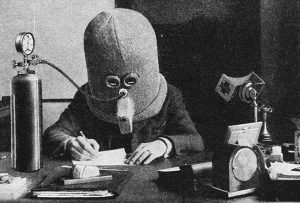 I think we have all had times when we couldn’t seem to concentrate on our work. Or maybe you had a child who couldn’t concentrate on their homework. Well, in 1925, an inventor named Hugo Gernsback, a Luxembourgish-American inventor, writer, editor, and magazine publisher, invented a helmet to make sure a person focused on their work. It was called the Isolator, and it was…well, bizarre. Gernsback was often known as “The Father Of Science Fiction,” and one look at his invention can tell you why that might be. The Isolator was a wooden helmet that blocked out sound and vision in order to help the wearer focus on whatever task was at hand. Gernsback claimed that the helmet blocked out sound by up to 95%, and the tiny glass spy-hole ensured that no amount of movement nearby could be seen, so that the wearer was not distracted. This would eliminate all outside distractions, and barely give enough room for the wearer to see the work in front of them, and nothing else.
I think we have all had times when we couldn’t seem to concentrate on our work. Or maybe you had a child who couldn’t concentrate on their homework. Well, in 1925, an inventor named Hugo Gernsback, a Luxembourgish-American inventor, writer, editor, and magazine publisher, invented a helmet to make sure a person focused on their work. It was called the Isolator, and it was…well, bizarre. Gernsback was often known as “The Father Of Science Fiction,” and one look at his invention can tell you why that might be. The Isolator was a wooden helmet that blocked out sound and vision in order to help the wearer focus on whatever task was at hand. Gernsback claimed that the helmet blocked out sound by up to 95%, and the tiny glass spy-hole ensured that no amount of movement nearby could be seen, so that the wearer was not distracted. This would eliminate all outside distractions, and barely give enough room for the wearer to see the work in front of them, and nothing else.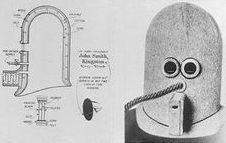
While it might have been a great device to help the wearer focus, it looked more like some kind of medieval torture device. The front of the device had an oxygen tube that was attached to a bottle of oxygen, so it was impossible to eat and study too. So, with no sound, no food, no way to play video games, the modern child would have no choice but to focus on homework. Now, I don’t know if the device could be locked in place…only to be removed when the work at hand was done, but if that is the case, I would think the wearer would get right to the task, so that the device could come off sooner. Just think of how much studying a college student could accomplish. Of course, my guess would be that even a person who was not claustrophobic before wearing the Isolator, would be claustrophobic after wearing it…not to mention a little paranoid, and leery of the person  who made them wear the Isolator in the first place.
who made them wear the Isolator in the first place.
The Isolator never really caught on, and I think anyone can see why that might be, but I guess it might have been a good idea, had it not been so archaic and confining. Of course, that was only part of the problem. The wearer also looked ridiculous, and while they could be anonymously ridiculous looking in some places, it didn’t work that way at the office or in study hall, where everyone knew who was in the office or class. And, of course, it would be really creepy sitting next to someone who was wearing the Isolator. I think we will have to chalk this one up to a good idea gone crazy.
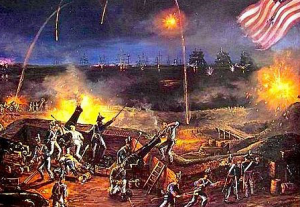 When I think of Independence Day, I often think about how the fireworks remind me of the many battles that went on in order to win our freedom. Then, I began to wonder if there was ever a time when the 13 colonies almost didn’t become the United States. Britain was, after all, the world’s greatest superpower at the time. British soldiers fought on 5 continents and they had an amazing navy. They massacred rebels and civilians in Jamaica and India around the same time and retained those colonies. So, why not the 13 colonies of North America? There are many explanations, but the one I found most interesting seems, almost to tie to the way things are in America right now…and really all along.
When I think of Independence Day, I often think about how the fireworks remind me of the many battles that went on in order to win our freedom. Then, I began to wonder if there was ever a time when the 13 colonies almost didn’t become the United States. Britain was, after all, the world’s greatest superpower at the time. British soldiers fought on 5 continents and they had an amazing navy. They massacred rebels and civilians in Jamaica and India around the same time and retained those colonies. So, why not the 13 colonies of North America? There are many explanations, but the one I found most interesting seems, almost to tie to the way things are in America right now…and really all along.
The reality is that Britain won many times on the battlefield, but…lost in the taverns. The taverns, you say. How 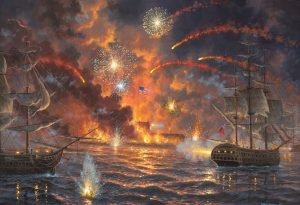 could that be? Well, taverns were everywhere. They were the social network of colonial life, much like the town hall meetings, and even more, like Facebook or Twitter today. Some areas of Massachusetts and Pennsylvania had taverns every few miles. People could get their mail there, hire a worker, talk to friends, sell crops, buy land, and eat a good meal. It was in these places that opinions were formed. People discussed the problems they had with British rule, and talked about how to get rid of the yoke of the Mother country.
could that be? Well, taverns were everywhere. They were the social network of colonial life, much like the town hall meetings, and even more, like Facebook or Twitter today. Some areas of Massachusetts and Pennsylvania had taverns every few miles. People could get their mail there, hire a worker, talk to friends, sell crops, buy land, and eat a good meal. It was in these places that opinions were formed. People discussed the problems they had with British rule, and talked about how to get rid of the yoke of the Mother country.
Some say that Britain might have had a chance if they had been represented in the taverns too, but I don’t think so. The time had come for Americans to think for themselves, and to run their own lives and their own country. First came the Stamp Act and the Americans protested. More oppression followed, as did the protests. 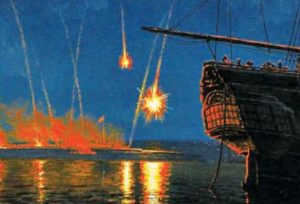 The resistance grew and grew, until war broke out. No matter what it took, the colonies were determined not to lose. The tavern meetings had accomplished what they needed to. No matter how many times it looked like Britain might win, they would not, because of…well, social networking. Social networking, when people get together to discuss right from wrong, and to discuss solutions. Sometimes the solutions are simple, and other times they create enough of a stir to bring about a revolution. No matter what the reason, the colonies were not about to lose, and because of that, we are a free nation and it was on this day, July 4, 1776 that our independence was made a reality, and we became the land of the free and the home of the brave. Happy Independence Day America!!
The resistance grew and grew, until war broke out. No matter what it took, the colonies were determined not to lose. The tavern meetings had accomplished what they needed to. No matter how many times it looked like Britain might win, they would not, because of…well, social networking. Social networking, when people get together to discuss right from wrong, and to discuss solutions. Sometimes the solutions are simple, and other times they create enough of a stir to bring about a revolution. No matter what the reason, the colonies were not about to lose, and because of that, we are a free nation and it was on this day, July 4, 1776 that our independence was made a reality, and we became the land of the free and the home of the brave. Happy Independence Day America!!

